Frequency 13 – what does ‘digital’ really mean?
The term ‘digital’ art is a slippery, broad denotation, a fact reflected in the highly varied programme at this year’s Frequency festival of digital culture in Lincoln, spanning sound, light, interactive, video and performance pieces.

With many artists taking familiar technology such as GPS and Smartphones as their tools, the show proves that digital technologies have become one of the most forthright narrators of the story of our lives; whether or not we’re complicit in its role as conduit, observer and raconteur.
It’s this fact of digital’s omniscience that plays a central role in much of the artwork at this year’s sprawling, multifarious and rather brilliant festival, which runs until the end of this week.
The organisers of the biennial festival, now in its second iteration, speak of taking ‘revolution’ as its theme, though this is about as broad a nomenclature as the ‘digital’ of its subtitle.
Speaking with Frequency artistic directors Threshold Studios, a Midlands-based arts and media organisation, the brief was deliberately loose; instead aiming to foster a culture of non-hierarchical curation and democracy.
As such, it’s perhaps little surprise that the overarching theme appears to be not revolution but life, ourselves and other people; hugely wide topics placed in site-specific contexts.
The sites of Frequency’s works underpin the resourcefulness of their gestation (the festival receives little public funding, with the entire event dependent on relatively modest grants from the Arts Council to the tune of £168,000 and partnerships with organisations including the University of Lincoln, Lincolnshire and Lincolnshire County Council)
There’s a feel of insurgency to the curation across Lincoln’s cobbled, Medieval streets, with many pieces housed in stunning churches or friaries, and others taking over some of the city’s many abandoned shops, digitising the Mary Portas dream into a delightfully dystopian re-appropriation of the high street.
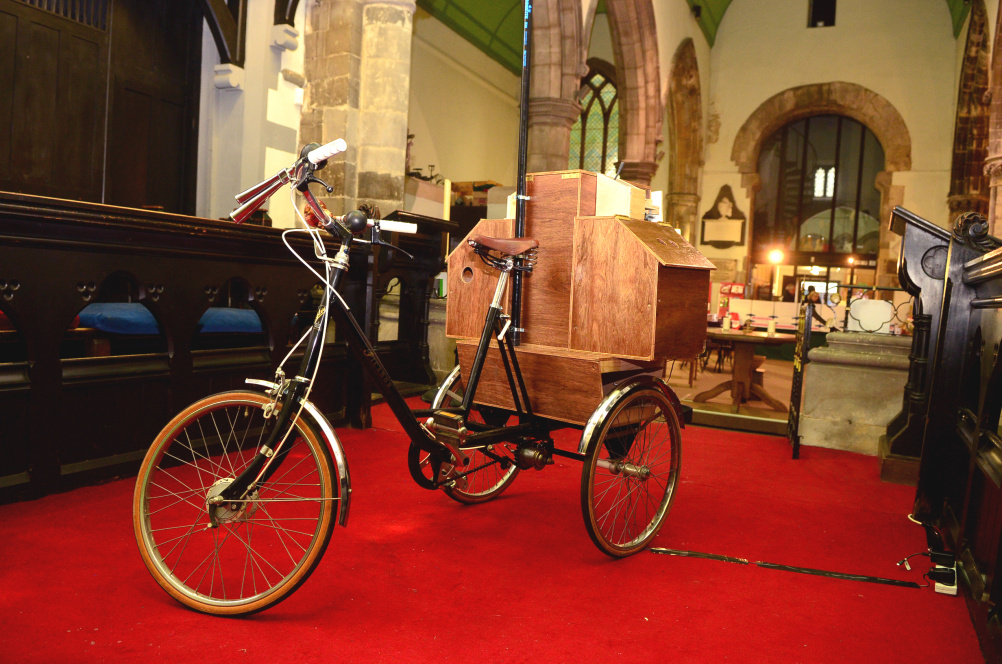
Among the commissions in a church space is Curio, a modified tricycle that riffs off the Victorian cabinet of curiosities. Designed by Tom Cretney and Nick Simpson of General Practice, the piece comprises three small boxed spaces on the back of the trike, each housing a different art commission.
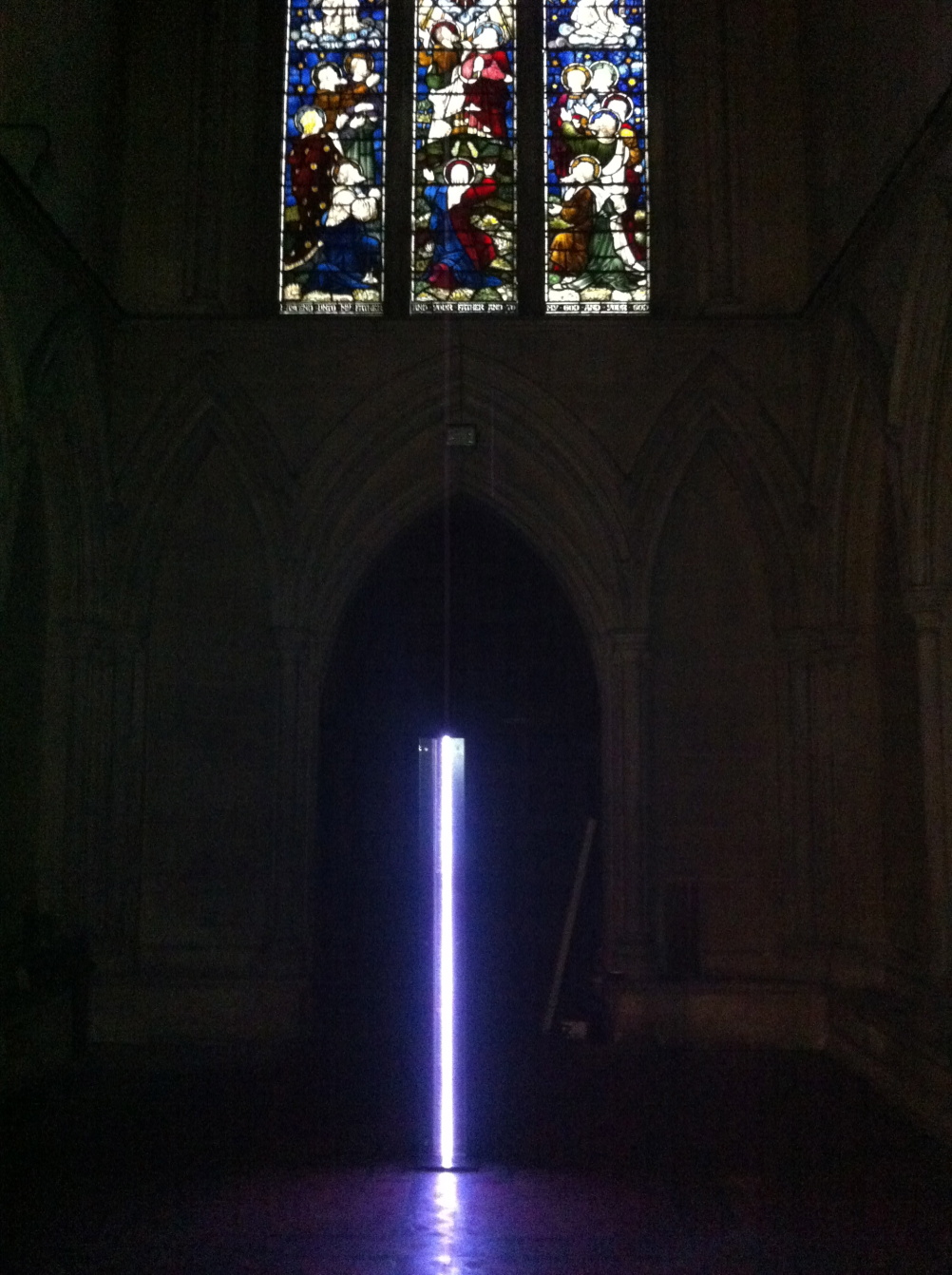
Elsewhere, Chris Levine’s staggering Angel Presence stands in St Swithin’s church – a blue light monolith from which an angel image flits when the viewer turns their head.
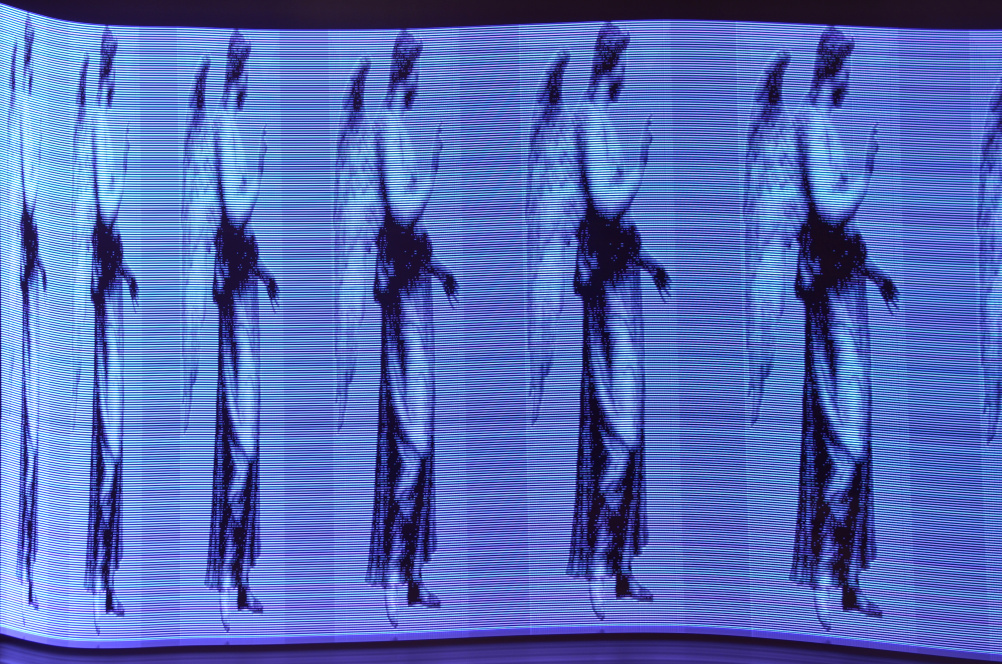
The stained glass backdrop to Alexis Rago’s Impermanent and Everlasting installation at Chad Varah house adds to the work’s sense of reverence at its seemingly-impossible tapered form.
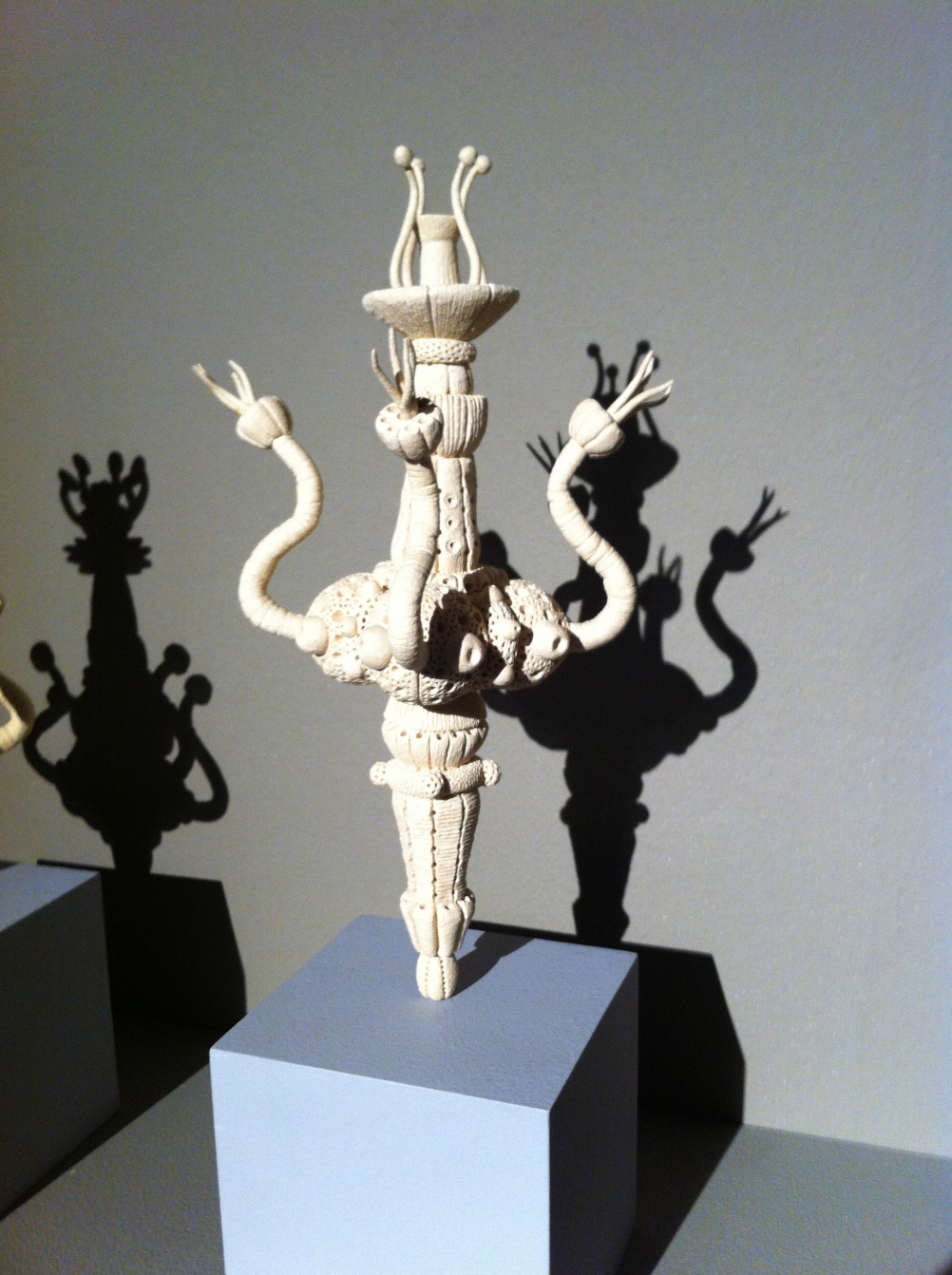
The piece acts as a satellite to his show at the National Centre for Craft and Design in nearby Sleaford. Guiding us round the show, Rago explains how his background in biology informs his practice, in which each piece serves as a maquette for the next, forming process in which ‘the evolution is the design process’, says Rago. While in form his pieces are firmly standing in the world of ceramics (or rather flimsily, balanced on precariously narrow bottoms through the use of a metal pole through the centre), he’s looking to the digital in his use of light and sound, creating installations where the ceramic is spotlighted and soundtracked by carefully choreographed elements such as the noise of clay shattering and recordings creating during the sculptures’ creation.
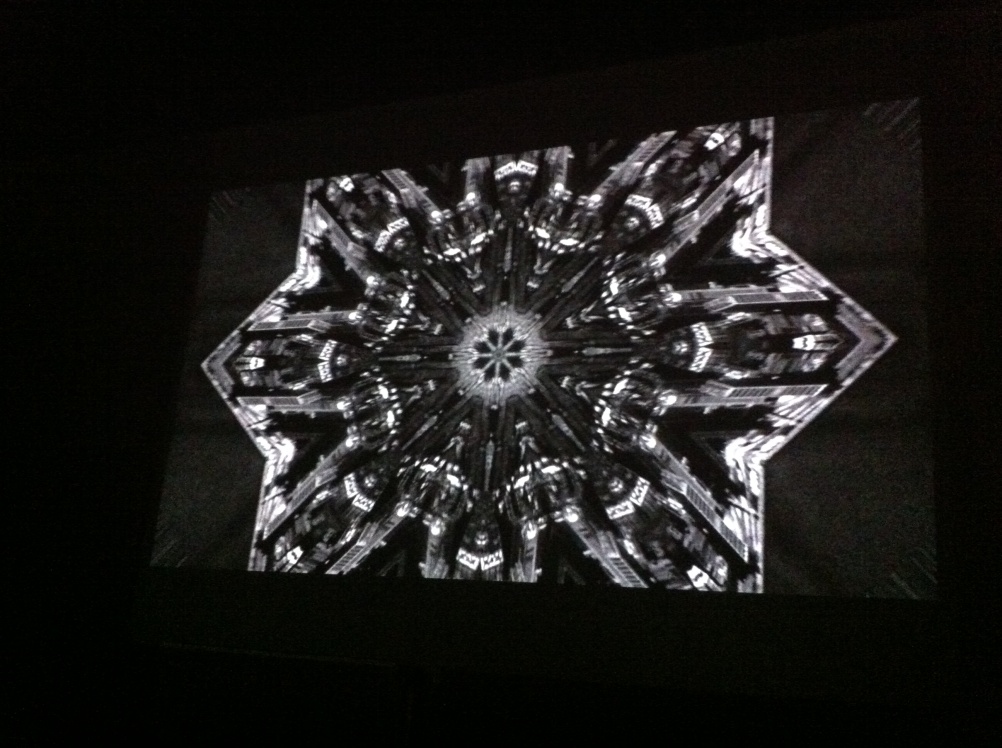
One of our two major highlights of the festival was Completely in the Present, a two-room installation by festival artistic directors Threshold Studios, Burning Bridges and Tyler Hubby. The piece presents a joyous, yet discordant exploration of the life and work of filmmaker Tony Conrad, with its major draw an incredible video and sound work. The piece uses loud, discordant drones alongside a kaleidoscopic pattern that forms before our eyes from a mirrored, shattering monochrome cityscape. It’s disorientating, disconcerting and disruptive – exactly, in our view, what these pieces should be.
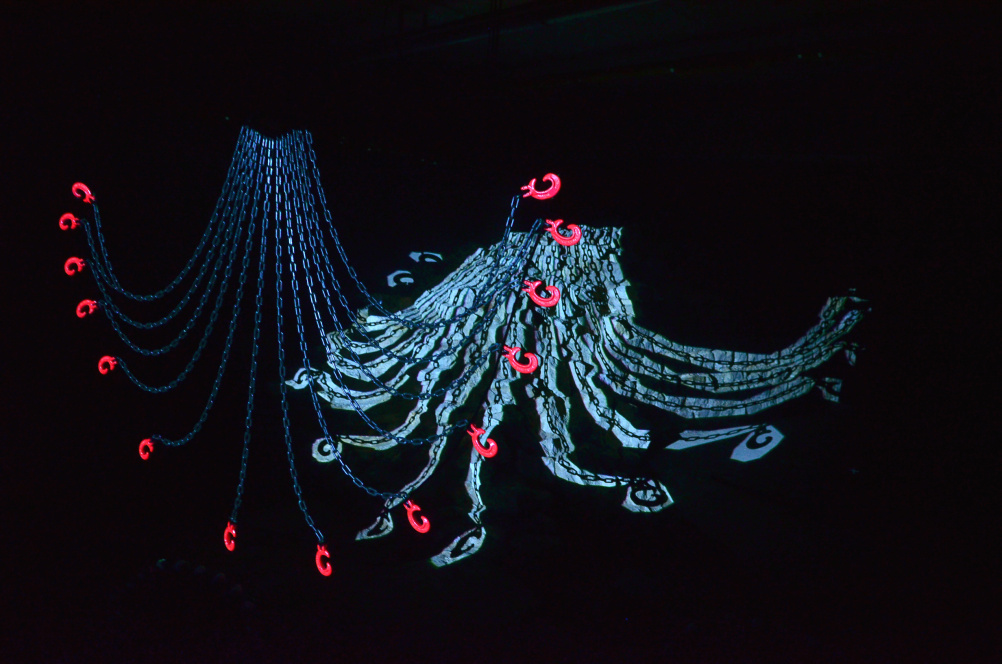
Our other highlight was Conversio by Trope, a mind blowing kinetic AV piece, designed specifically for its damp underground home, nestling beneath Lincoln’s old ruined wall of Posterngate. Formed of unwieldy chains, bright white boxes and strange, clunking sound, the piece forms a screenless animation as the pitch black setting is illuminated in neon flashes, synchronised with its ominous soundscape. The beauty of the interactive mechanics lies in the suspension of disbelief it forces in the viewer. You can just about see how it works – the chain isn’t really swinging upward, rather many chains are lit up, one after the other; though you still find yourself in awe at the gravity-defying possibilities. You can view one of Trope’s previous projects below:
Another incredible and incongruous space that makes the most of the juxtapositions between futuristic artwork and the city’s crumbling Medieval past is the Bath House next to Lincoln Castle, where Dave Griffiths’ work Babel Fiche is running. The 18-minute video piece was formed from moving-image content donated to the artist, which was then compressed onto microfilm to form a strange, non-linear ‘time capsule’. The piece explores how archivist of the future will view our continually-recorded present, which – as one of the video’s many narrators puts it – ‘we flick from scene to scene without observing’.
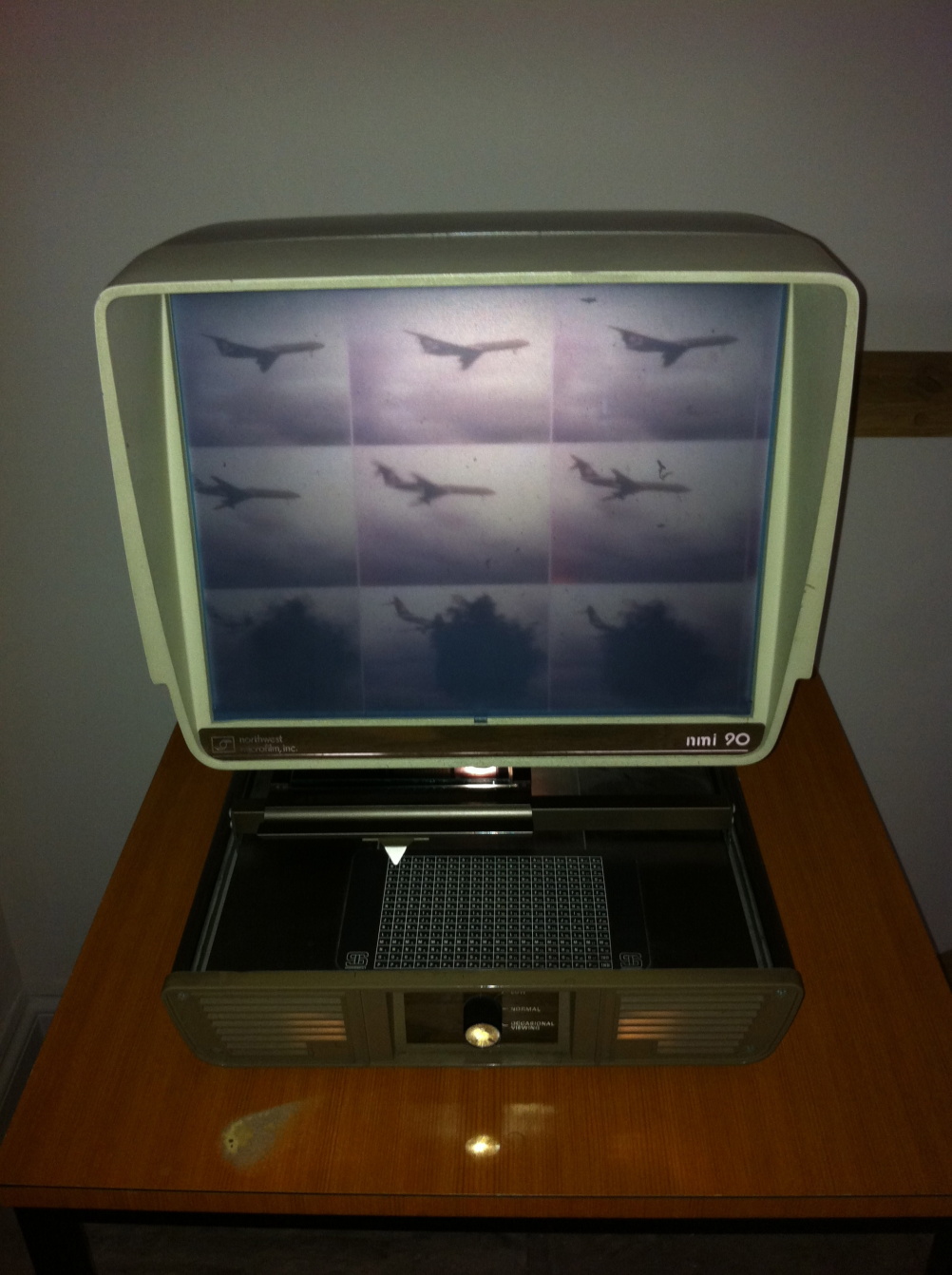
Through the endlessly shifting footage of a dead mouse, rubbish dump, clubbers, line dancers, pretty girls, planes, a young family in a suburban high street, riots and skimming pebbles by the sea, Griffiths places all imagery on a level plane. The non-hierarchical, non-linear treatment of the scenes questions what recorded fragments from today will be valuable in future; and whether our constant desire to record and document our time is, deep down, a manifestation of our ‘[fearing] the crime of disappearance’.
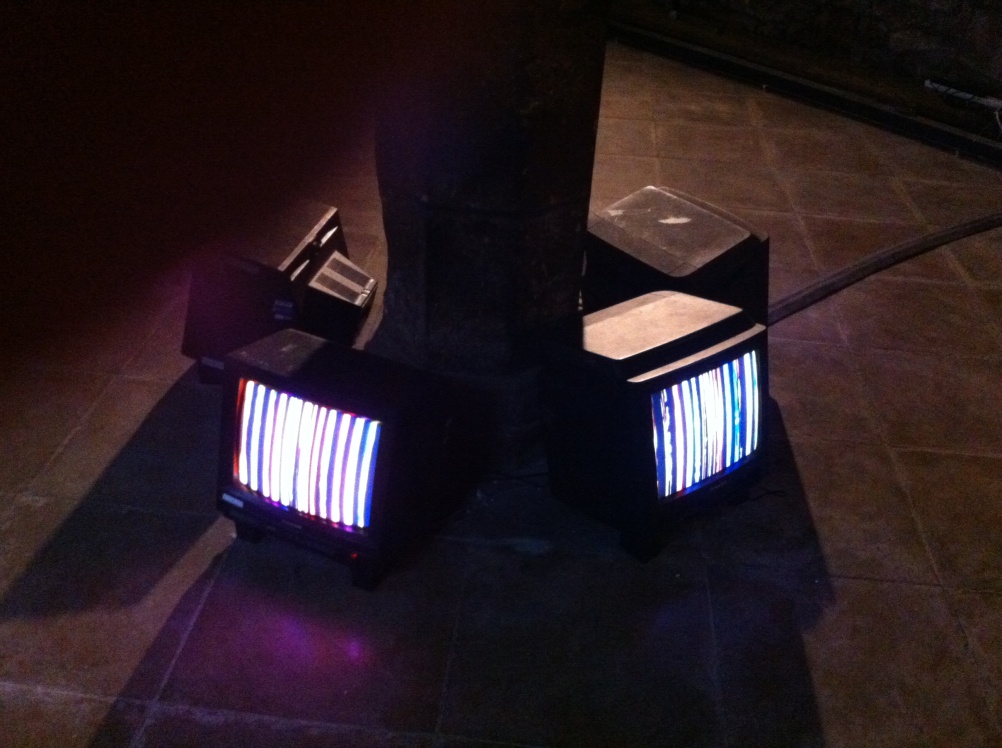
Many of the works at Frequency explore this notion of surveillance and documentation, fording the audience to view our own lives and those of others with a critical distance.
At The Collection gallery, group show Where are we Now? features work from artists including Jon Rafman, Paulo Cirio and Brian House that examine how our movements and lives are tracked by our technology. Rafman’s Nine Eyes series of artworks created from Google Images stills are as resonant as ever; aiming to show the ability of robotically-captured images to show the world without the subjective framing of human image-selection. Simultaneously, they underscore how we’re unknowingly, continually giving away pieces of our lives to the public gaze.
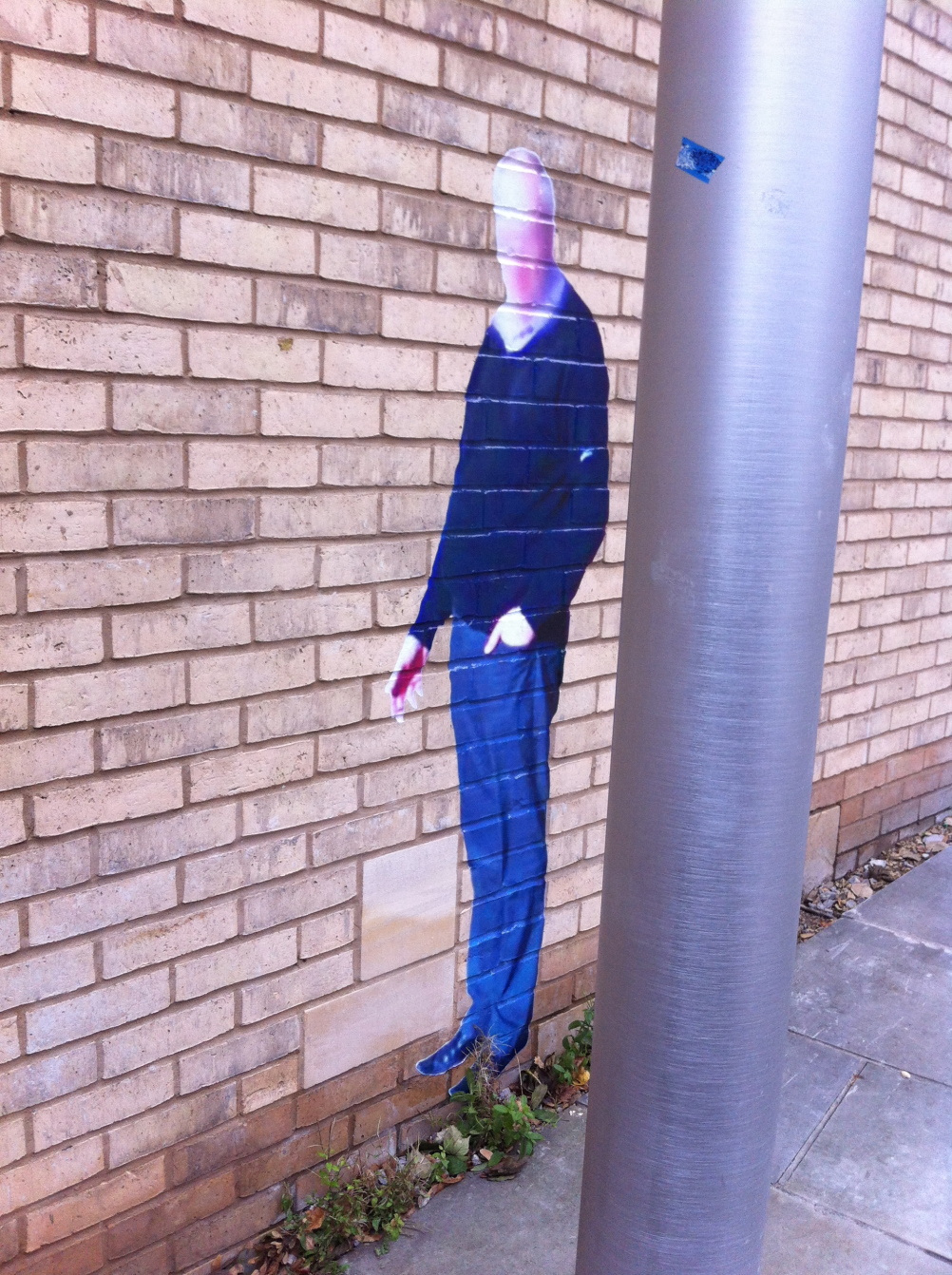
Cirio’s figurative work, Street Ghosts acts as an extension to this: taking images of people captured with Google images, the artist blew these up into life-size vinyl stickers, plastered across the walls of Lincoln.
House’s standout piece is Quotidian Record – a vinyl record that uses audibly documents everywhere the artist visited over a single year. Each place was recorded on a phone GPS, and assigned a musical note. These reduce a year to just 11 minutes of rhythmic, surprisingly melodic audio, with each rotation representing a 24-hour period in the artist’s life.
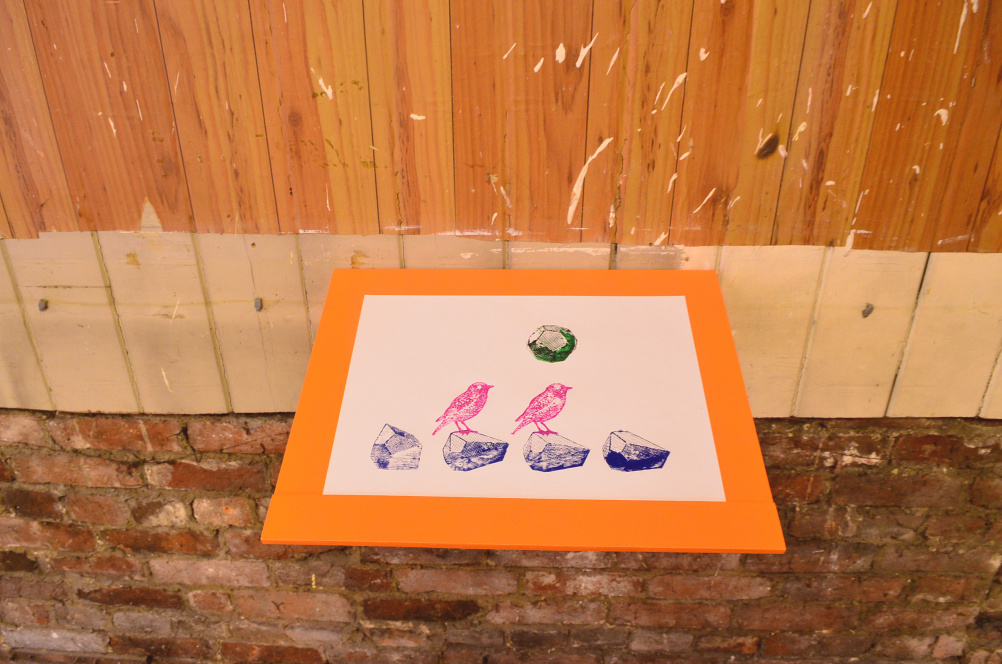
Alongside the digital design installations and artworks a surreal array of ambitious performance-based pieces have variously seen us cowering under a schnapps-stained table at a clandestine 17th birthday party (Zest Theatre’s Hollyoaks-esque Gatecrash piece); sing our favourite song at a pair of WI women as an effeminate French boy named Jonas (Me and the Machine’s mind-blowing The Show of Your Life); and participate in a post-‘Infocalypse’ Evangelical incantation, surrounded by beautiful wooden birds (Juneau Projects’ playfully provocative Chapel of the Infocalypse installation).
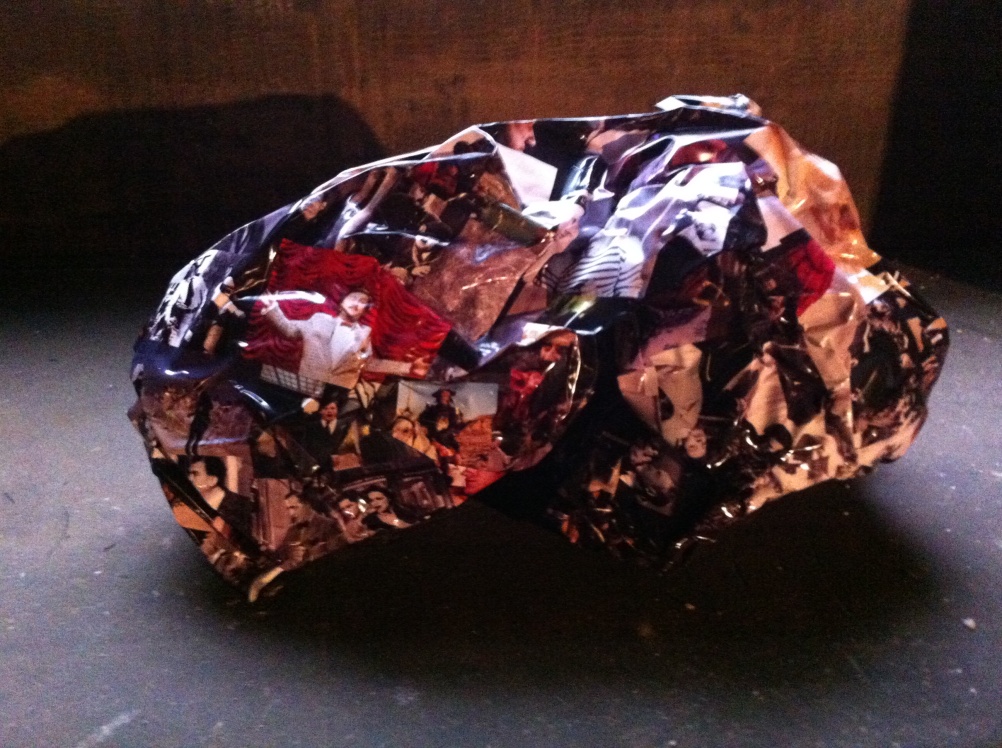
As Frequency proves, ‘digital’ art and the confusing space it inhabits is being interrogated like never before by a growing number of hungry, exciting young designers and artists.
It’s a hugely fast-paced field, where once futuristic, now familiar technology like GPS and Smartphones are being manipulated in unexpected, hugely creative ways.
We can’t wait to see what Frequency 2015 will have to offer.
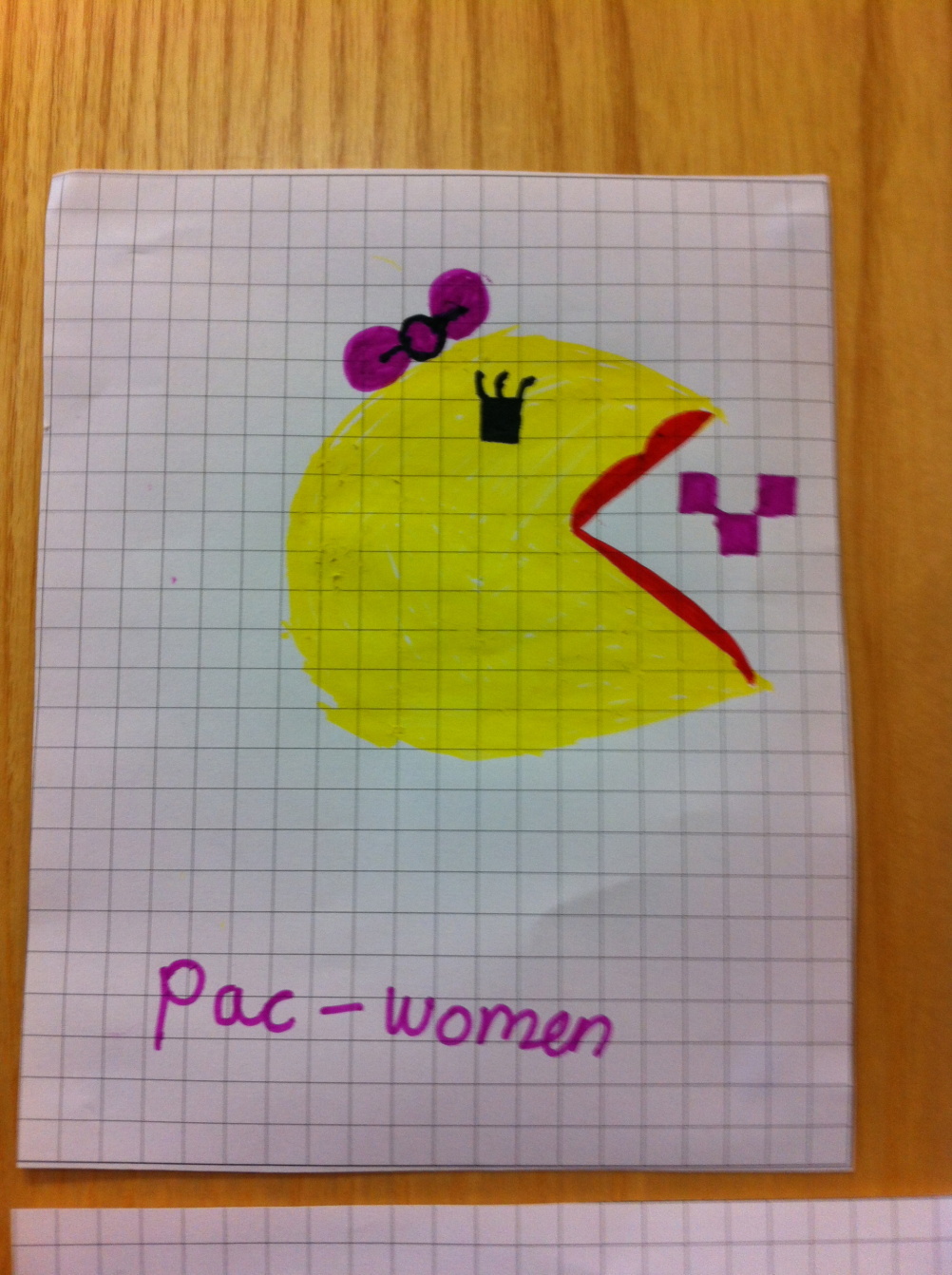
Frequency 13, Lincoln Digital Culture Festival runs until 26 October at various venues across Lincoln. For more information visit http://frequency.org.uk/
-
Post a comment




